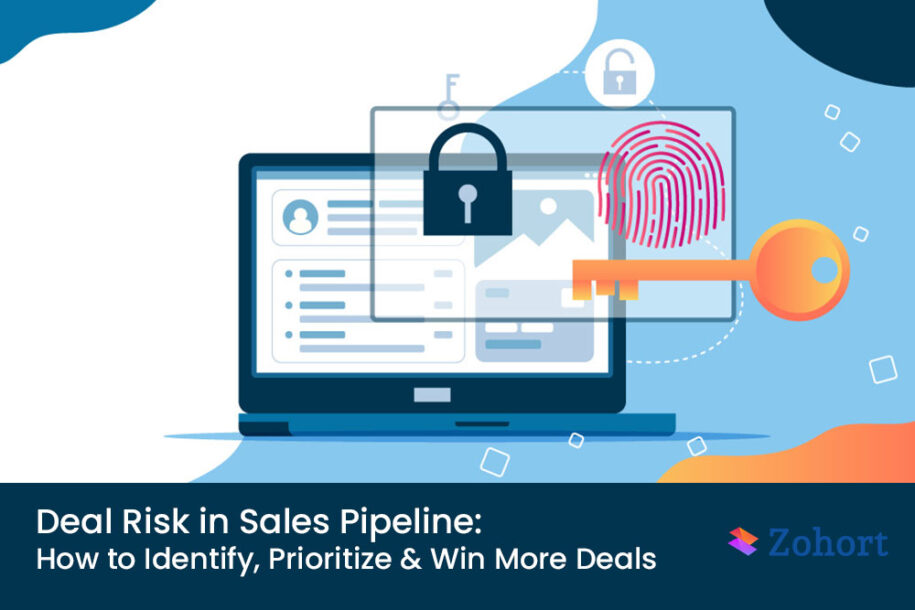When it comes to SaaS or B2B sales, not every deal in your pipeline is worth pursuing. Some are goldmines; others are just dead weight. Spotting deal risk in your sales pipeline early helps your team avoid wasted efforts, improve forecasting accuracy, and focus on the leads that are most likely to convert.
In this blog, we’ll walk you through how to identify deal risk in the sales pipeline, prioritize high-value opportunities, and boost your win rates—powered by insights, data, and smart automation.
What is Deal Risk in a Sales Pipeline?
Deal risk refers to the possibility that a potential sale in your pipeline may stall, go cold, or ultimately fall through. It’s the invisible friction that leads to lost revenue, missed quotas, and inaccurate forecasting.
From inconsistent buyer engagement to internal misalignment or pricing objections—these risks can hide behind the appearance of progress. The sooner you identify them, the faster you can course-correct
Common Causes of Deal Risk in a Sales Pipeline
- Infrequent or Inconsistent Communication
If a lead hasn’t replied in weeks or keeps delaying meetings, it’s a red flag. Lack of urgency can indicate a mismatch in priorities or low intent to buy. - Multiple Stakeholders, No Decision Maker
When you’re talking to too many people but no one seems to have the final say, the deal might be stuck in internal chaos. - Extended Sales Cycles
Deals dragging beyond your average closing time often point to uncertainty, budget issues, or hidden objections. - Unclear Value Alignment
If the buyer doesn’t fully understand your product’s impact or ROI, they’re less likely to champion the deal internally. - Lack of Next Steps or Commitments
No calendar invites. No follow-ups. No progress. When your deal doesn’t move forward with small commitments, it’s a sign of passive disinterest
How to Identify Deal Risks Early
1. Track Buyer Engagement Activity
Use CRM data to track when your prospect last opened an email, replied, or attended a call. Long gaps in engagement = high risk.
2. Monitor Deal Velocity
Compare how long a deal is stuck in a specific stage versus your average time-to-close. Anything significantly delayed should raise questions.
3. Use a Risk Scoring Model
Assign scores based on lead behavior, decision authority, urgency, budget clarity, and timeline. The higher the risk score, the more attention it needs—or the faster it should be disqualified.
4. Set Qualification Checkpoints
Revisit your BANT or MEDDIC criteria mid-way through the pipeline. Has anything changed? Has budget approval been confirmed? Is the champion still advocating?
How AI and Automation Help Spot Deal Risks
Modern sales tools powered by AI can highlight risks you might overlook:
- Sentiment analysis of emails and calls to detect lack of enthusiasm or hesitation.
- Predictive deal scoring to surface at-risk opportunities.
- Automated alerts when there’s no activity after X days.
This way, your reps spend less time guessing and more time selling to the right people.
How to Prioritize and Fix Risky Deals in Sales
Re-Engage Strategically
Send a personalized email, share a success story, or offer to reframe the value proposition. If there’s still no response, cut your losses.
Requalify the Lead
Ask direct questions to validate if the deal is still alive. Don’t be afraid to ask, “Has anything changed on your end?”
Focus on High-Intent Deals
Use data to double down on warm leads who are showing clear buying signals. Focus your team’s energy where it matters most.
Align with the Buying Committee
Ensure you’re connected to the decision-maker and key influencers. Recalibrate your messaging to address each stakeholder’s pain points.
Conclusion:
Not all deals deserve equal time and effort. Identifying deal risk in your sales pipeline isn’t just about avoiding failure—it’s about improving efficiency and increasing the odds of success.
With the right data, a clear qualification process, and intelligent automation, you can reduce surprises, improve forecast accuracy, and hit your sales targets more consistently.
If you haven’t already, tighten your discovery call process. It’s often the first place deal risks begin.
Read More: 7 Steps to Acing a Discovery Call
Zohort is a leading platform connecting top talent with fast-growing B2B SaaS companies. With 200+ partner companies, 50+ SDR & AE roles, and 30+ AM & CS openings, we’re bridging the gap between ambition and opportunity. Over 2,500 Zohortians trained and 1,500+ placed—we don’t just open doors, we build careers.
Looking to hire B2B SaaS sales professionals or explore exciting SaaS sales job opportunities? Zohort has you covered.


